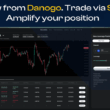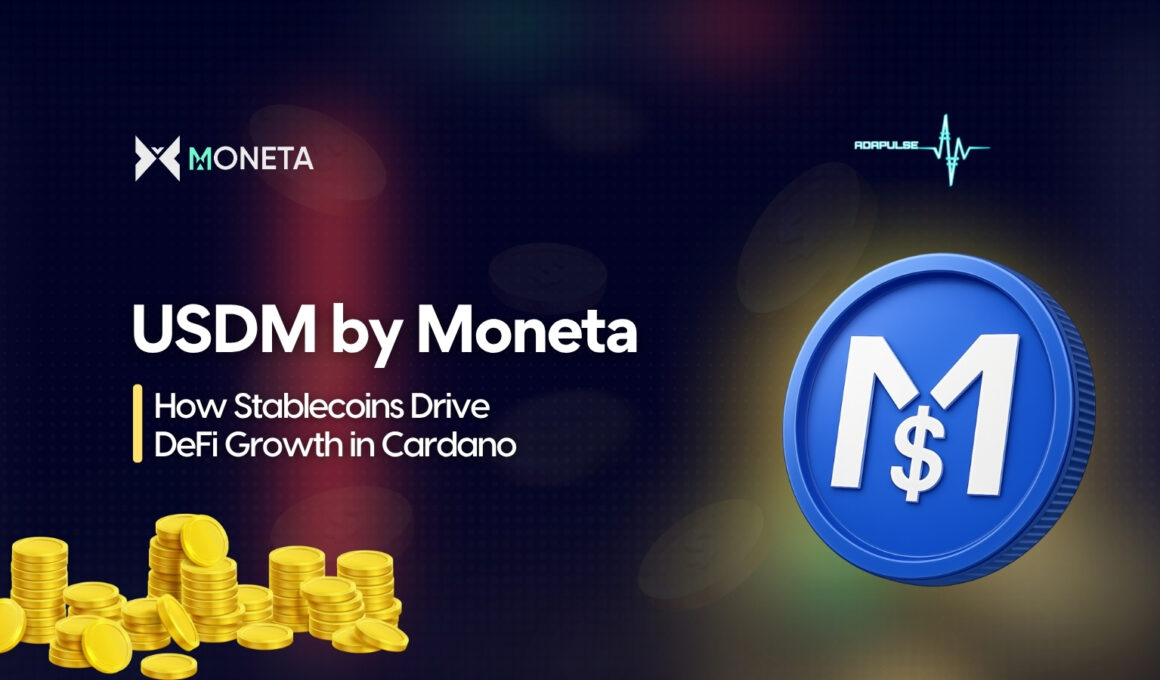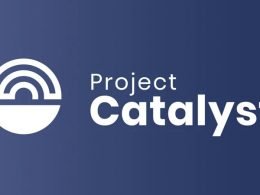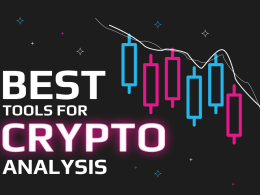Back in the early years of cryptocurrency, all digital assets were highly volatile. There was no reliable way to keep money in the crypto ecosystem without exposing it to wild price swings. For example, Bitcoin and other tokens served as main trading pairs but their prices could swing dramatically day to day.
A decade ago, this volatility meant crypto could not serve as an effective or stable medium of exchange, limiting its usefulness for everyday transactions. Traders who wanted to exit risky positions had to convert back to fiat currency usually through slow, offchain processes because there were no onchain assets with stable value.
This made the pre-stablecoin crypto market a challenging environment for liquidity. Funds flowed in and out with high friction and many potential participants especially risk averse investors stayed away due to the unpredictability of crypto prices
Stablecoins Arrive: Opening the Floodgates of Liquidity
The innovation of stablecoins changed everything by introducing digital assets pegged to stable values usually fiat currencies like the US dollar. The first stablecoins appeared around 2014, combining blockchain technology with the stability of traditional currency.
By design, stablecoins maintain a steady 1:1 value with an underlying asset. For instance, 1 USDT or USDC equals $1 through collateral or reserve mechanisms. This breakthrough solved crypto’s volatility problem, allowing people to hold and transfer value onchain without worrying about sudden price crashes
The difference was immediate and dramatic. Stablecoins provided a safe parking space for crypto funds. Traders and investors could now stay in the crypto ecosystem between trades or during market turbulence, without converting back to cash. In other words, one could sell a volatile coin into a stablecoin and effectively be in cash onchain, ready to reinvest at any time. This opened a huge window for liquidity to flow into crypto markets. Participants who had been hesitant to enter crypto due to volatility began to use stablecoins as their entry point.
In fact, stablecoins have become important in the cryptocurrency ecosystem, providing stability in an otherwise volatile market. It allows cautious investors to keep capital in crypto without risking big losses to price. Today, stablecoins are so widely used that they account for the majority of crypto trading volume. More than two-thirds of the trillions of dollars in recent crypto transactions have been via stablecoins. This surge in usage reflects how much liquidity stablecoins have brought in. Billions of dollars that might have stayed on the sidelines or remained in fiat bank accounts can now enter crypto easily through stablecoins.
USDM: Pushing DeFi and Ecosystem Growth with Stability
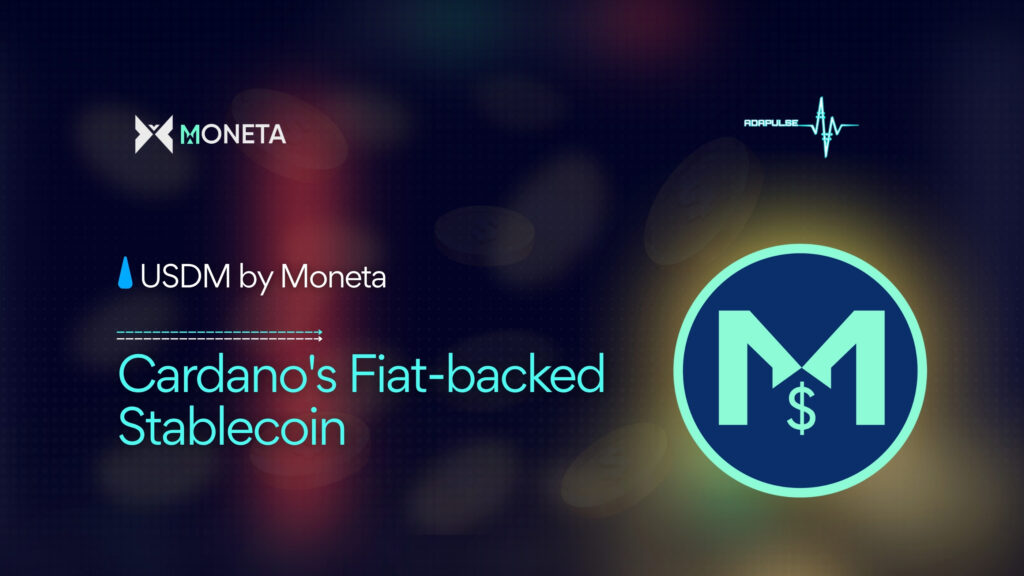
USDM by Moneta brings a reliable US dollar peg directly to the Cardano blockchain. Establishing itself as the ecosystem’s premiere fiat backed stablecoin. In a market often driven by volatility, USDM delivers stability through a 1:1 backing with real USD reserves.
This article introduces USDM, explains why stablecoins play a critical role in DeFi and shows how Moneta’s model creates real world utility by integrating deeply with Cardano dApps. By prioritizing transparency, regulatory compliance and seamless usability. USDM actively strengthens Cardano’s expanding DeFi ecosystem and positions itself as foundational infrastructure.
Take for instance, a Cardano trader wanting to trade or lend without worrying about ADA’s price swings. This is what that means. USDM offers a stable unit of account pegged to the US dollar that traders can trust for day to day transactions and complex DeFi strategies alike. Launched in March 2024, USDM quickly gained traction as Cardano’s first fully USD collateralized stablecoin.
Since its debut, USDM has grown steadily in usage and integrations. By early 2025, USDM reached a circulating market cap of around $48 million. This is significant for a Cardano asset and it’s joining older Cardano stablecoins like DJED and iUSD in popularity. Major DEXs on Cardano such as Minswap, SundaeSwap, Genius Yield, VyFinance and others quickly listed USDM trading pairs
Beginner Tips for Using USDM
If you’re just starting your DeFi journey in Cardano’s DeFi ecosystem, USDM is a friendly starting point to get into the world of stablecoins on Cardano. These are some tips and steps to help you make the most of USDM safely and easily.
1. Acquiring USDM: You have two main avenues to get USDM
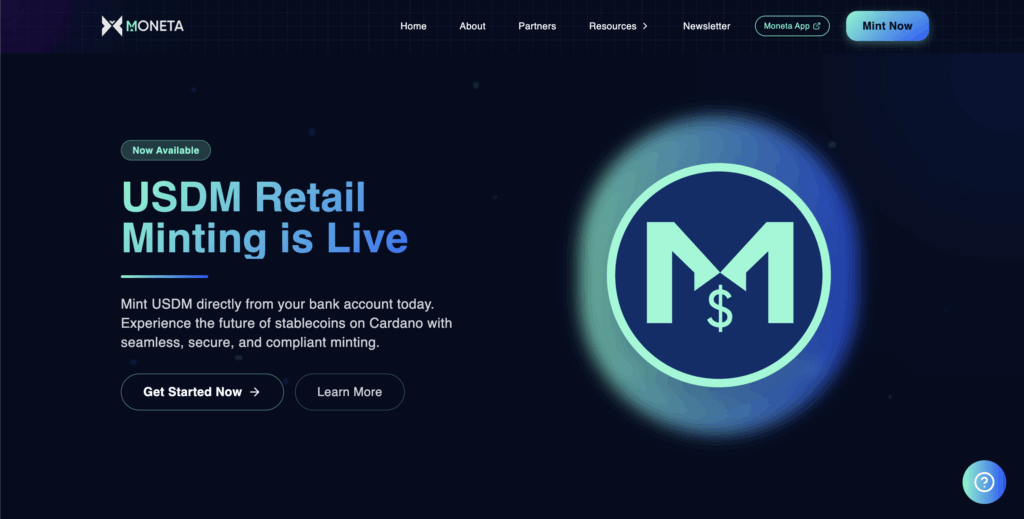
- If you are in an eligible region, you can mint USDM directly. This involves signing up at Moneta’s app web portal, doing KYC verification, and then depositing USD from your bank. The minimum mint amount is $1,000. So, this route is best if you plan to move a substantial amount into Cardano’s ecosystem. Minting is free of Moneta fees, you only pay any bank transfer fees. Remember that the process can take a couple of days for the bank transfer to clear. Once completed, you’ll see USDM in your Cardano wallet that you linked.
- If you already have some ADA, the simplest way to get USDM is to swap for it on a Cardano DEX. Head over to a platform like Minswap or SundaeSwap. These are web based decentralized exchanges on Cardano. Choose a trading pair like ADA/USDM and perform a swap. This way, even if you’re not in a supported region for minting or you just want a small amount of USDM below the mint minimum, you can obtain it permissionlessly.
2. Storing and Managing USDM
You’ll need a Cardano wallet that supports Cardano native tokens. Some popular choices are:
- Lace, the IOG’s official light wallet: It now natively lists USDM in its token directory, meaning you can easily see and send USDM.
- Eternl, a feature rich web wallet/browser extension: Supports USDM and allows viewing token balances, sending and even interacting with DEXs via integrated dApp browsers.
When setting up a Cardano wallet for the first time, securely back up your recovery phrase. USDM will reside in the same address as your ADA, just like an ERC-20 token sits in an Ethereum address. Always send USDM to Cardano addresses starting with addr1… or addr_test… on testnet. Never try to send USDM to an exchange deposit for USDT/USDC on another chain, as that would result in loss.
3. Using USDM in Cardano DeFi
Once you have USDM, you can examine Cardano’s DeFi apps with it:
- Provide liquidity on a DEX pool. For instance, a USDM/ADA pool on Minswap to earn a share of trading fees and potential yield farming rewards. This could be appealing if you want to earn some return while holding a stable asset.
- Use USDM on lending platforms like Liqwid to lend your USDM stablecoin and earn interest from borrowers. Borrowers often like to borrow stablecoins to avoid exposure to volatile assets, so demand can be there.
- You can also transact with others because USDM is stable. It’s great for sending money to someone in a predictable value. For example, if you need to pay a friend 50 dollars worth for a dinner, sending 50 USDM is straightforward and they don’t have to worry about it turning into 45 or 55 dollars overnight due to market moves.
Final Takeaway
From a beginner’s standpoint, we provided practical tips to safely start using USDM, showing that it’s quite user friendly whether one is minting directly or swapping on a DEX. The learning curve is gentle, especially compared to some DeFi processes, which speaks to Moneta’s success in focusing on user experience. Community feedback has corroborated this. People find value in USDM’s stability and have commended the project for its forward thinking approach to transparency and architecture.



